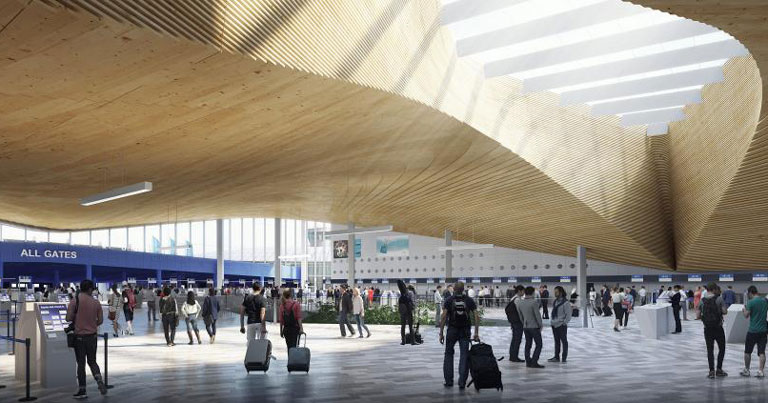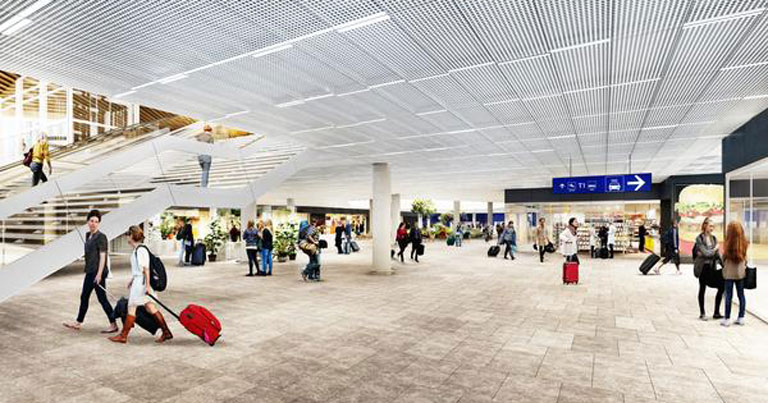
Finavia has had to adjust its operations due to the fall in air traffic caused by the coronavirus, and it has closed terminal areas, services and runway 3 at Helsinki Airport. However, the airport group has announced that it is going ahead with the Helsinki Airport Development Programme.
The development programme is a long-term investment that aims to provide air passengers with a good level of service and offer airlines the capacity they would need in the future.
The extension will feature a large square-shaped departure hall of the new Terminal 2, which will include six separate departure areas.
Martti Nurminen, Project Director of the Helsinki Airport Development Programme, explains: “The departure areas could be described as islands. When you enter the departure hall, there will be two islands on both sides. You can find the remaining two islands when you walk towards the security control area.”
Passengers will be able to walk through the departure area islands closest to the security control area. Passengers drop off their baggage and walk through the island – between the check-in desks – to security control. Baggage is transported to the lower levels of the terminal building with lifts.
The Terminal 2 departure hall will have 86 check-in desks and points with four points, located near every island, for special baggage. The airport says that the capacity and flexibility of the check-in desks will increase considerably.
“Using a single departure hall creates an opportunity for the efficient joint use of check-in desks and points. Flexibility makes it possible to change the way the facilities are used in the future. The security control process also becomes faster and more efficient as we introduce new technology,” says Nurminen.
Nurminen also praises the new departure hall’s architecture in addition to its functionality.
“The massive wooden eave of the terminal’s entrance continues inside as a wooden suspended ceiling. I believe that it will become one of the landmarks in the history of modern Finnish architecture.”

Helsinki Airport currently has three separate baggage reclaim halls that passengers use depending on where they are coming from. The new Terminal 2 will only have a single baggage reclaim hall where passengers pick up their baggage. According to Finavia, this will make the baggage process more efficient.
“11 baggage conveyor belts will be built in the hall. This means that there will be more of them than in the current baggage reclaim halls. The conveyor belts will also be longer,” Nurminen says.
Passengers will be able to walk around the conveyor belts, making it easier for them to collect their luggage.
The extension of Terminal 2 is progressing as planned. A facade is being installed on the eight-storey parking garage that will be completed in 2020. The building will be covered with solar panels that support Finavia’s sustainability and environmental goals.
A horizontal tunnel towards the Ring Rail Line is being excavated, and another pedestrian bridge for passengers is also being built over the Ring Rail Line.
According to Finavia, the new terminal being built at Helsinki Airport combines efficiency and style and the experience gained from the COVID-19 situation will also be taken into account in the operations of the new terminal.
The development programme is meant to be completed in 2023.






